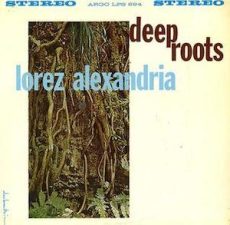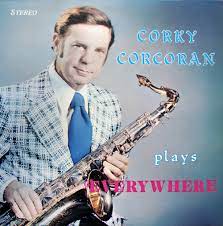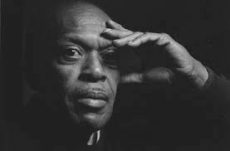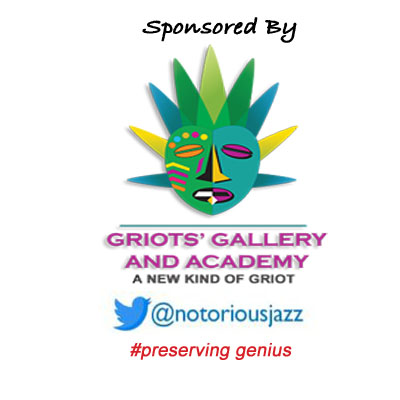
Daily Dose Of Jazz…
Vernel Anthony Fournier, was born July 30, 1928 in New Orleans, Louisiana, into a Creole family. He left college to join a big band led by King Kolax, however, after Kolax downsized to a quintet, he moved to Chicago, Illinois in 1948. There he played with Buster Bennett, Paul Bascomb and Teddy Wilson. As house drummer at the Bee Hive club on Chicago’s South Side from 1953 to 1955, he accompanied many visiting soloists, including Lester Young, Ben Webster, Sonny Stitt, J.J. Johnson, Earl Washington and Stan Getz.
From 1953 to 1956, Vernel worked many recording sessions with Al Smith, Red Holloway, Lefty Bates, and others. He joined Ahmad Jamal’s trio in 1957, along with bass player Israel Crosby, and remained with the group until 1962, appearing on a series of recordings on the Chess label. The best known of these, At the Pershing: But Not for Me (1958), became one of the best selling jazz records of all time, remaining on the Billboard jazz charts for over two years.
After leaving the Jamal trio, Fournier joined George Shearing for two years before rejoining Jamal briefly in 1965–66. He then took a long-running gig with a trio at a restaurant owned by Elijah Muhammad. Converting to Islam in 1975, he took the Muslim name of Amir Rushdan.
He worked with Nancy Wilson, Clifford Jordan, Billy Eckstine and Joe Williams, John Lewis and Barry Harris. He was a drumming teacher and worked at Barry Harris’s Jazz Cultural Theater, the New School, and the Mannes College of Music.
Suffering a stroke in 1994 left him unable to use his legs and confined him to a wheelchair. Although he was unable to play drums professionally, after his stroke, he continued his teaching activities. Never leading a recording date, Vernel recorded twenty-eight albums as a sideman with Lorez Alexandria, Gary Burton, Billy Eckstine, Benny Carter, Ahmad Jamal, Etta Jones, Sam Jones, Clifford Jordan, Houston Person, Jimmy Reed, George Shearing, and Frank Strozier.
Drummer Vernel Fournier, transitioned from a cerebral hemorrhage in Jackson, Mississippi on November 4, 2000.
More Posts: drums,history,instrumental,jazz,music

Daily Dose Of Jazz…
Corky Corcoran was born Gene Patrick Corcoran on July 28, 1924 in Tacoma, Washington and was considered a child prodigy. He began performing in bands at the age of 16.
Corcoran first played professionally in 1940 with Sonny Dunham, then joined Harry James’s ensemble from 1941 to 1947. Leaving James for a short time, Corky led his own ensemble and worked briefly in Tommy Dorsey’s band before rejoining James in 1949. He continued to work with James until 1957, playing concurrently with his own ensembles. Returning to James in 1962, he stayed almost up to his death.
Tenor saxophonist Corky Corcoran transitioned on October 3, 1979 in his hometown.
More Posts: bandleader,history,instrumental,jazz,music,saxophone

Daily Dose Of Jazz…
Clifford Arthur Edgehill, originally spelled Edghill, was born July 21, 1926 in Brooklyn, New York. His first professional work was touring with Mercer Ellington in 1948 and by 1953 was touring with Ben Webster. He played with Kenny Dorham’s Jazz Prophets and Gigi Gryce in 1956 and the following year toured with Dinah Washington.
He was a member of the Eddie “Lockjaw” Davis Quartet with George Duvivier and/or Wendell Marshall and Shirley Scott. He appears on several of Scott’s recordings, including her 1958 debut album, Great Scott!. as well as on Very Saxy with Eddie “Lockjaw” Davis, Buddy Tate, Coleman Hawkins, and Arnett Cobb.
As well as recording he also played in quartets led by Horace Silver, Cecil Payne, Hank Mobley, Doug Watkins, Charlie Parker and Annie Laurie. Edgehill remained active through the 1950s, 1960s and 1970s, appearing on several of the Prestige recordings on Mal Waldron’s 1956 debut album, Mal-1, and with Eddie “Lockjaw” Davis and Shirley Scott.
Drummer Arthur Edgehill retired from music in the Seventies.
More Posts: drums,history,instrumental,jazz,music

Three Wishes
While hanging out with Nica the three wishes inquiry was broached and Kenny Drew gave her his three wishes as follows:
- “To play.”
- “To play.”
- “To make love.”
*Excerpt from Three Wishes: An Intimate Look at Jazz Greats ~ Compiled and Photographed by Pannonica de Koenigswarter
More Posts: baroness,history,instrumental,jazz,music,pannonica,piano,three,wishes

Daily Dose Of Jazz…
George “Geordie” Hormel was born on July 17, 1928 in Austin, Minnesota. He was the grandson of George A. Hormel, the founder of Hormel Foods. He claimed to have invented the corn dog when he was a teenager growing up in Minnesota.
In the 1950s and 1960s, Hormel composed music for numerous television shows including The Fugitive, Lassie, Naked City and The Adventures of Rin Tin Tin. He also sang as part of The Utility Muffin Research Kitchen Chorus on Frank Zappa’s triple album Joe’s Garage in 1979. He’s also done music for Capitol Records, most importantly the Hi-Q production music library.
In 1968 Geordie bought the Masonic Temple for $125,000 and founded a major independent studio, The Village Recording Studio, in Los Angeles, California of which he was proprietor until his death. It was one of, if not the first 24 track studio and Dolby Sound. He owned the Wrigley Mansion in Phoenix, Arizona and the Wrigley Mansion Club housed within it.
Geordie Hormel, who was a pianist, composer, record company owner, equipment dealer and always, ahead of his time,. transitioned on February 12, 2006 in Paradise Valley, Arizona at 77 years old.
More Posts: bandleader,history,instrumental,jazz,music,piano




